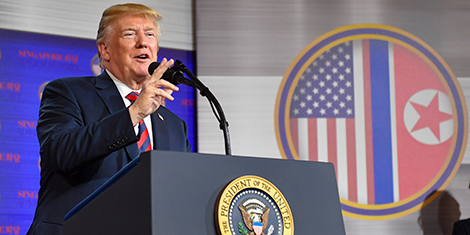
This article was originally published by the IPI Global Observatory on 14 June 2018.
The Singapore Summit between the leader of the Democratic People’s Republic of Korea (DPRK), Kim Jong-un, and US President Donald Trump—preceded by an historic border crossing and sit-downs with South Korean President Moon Jae-in, and meetings with Chinese President Xi Jinping—is a tremendous moment by any measure. Almost exactly 55 years after the Korean Armistice Agreement, the prospect of a formal end to the Korean War and significantly thawed relations on the Korean Peninsula seems possible. Just a few months ago, North Korea and US were threatening each other with war.




